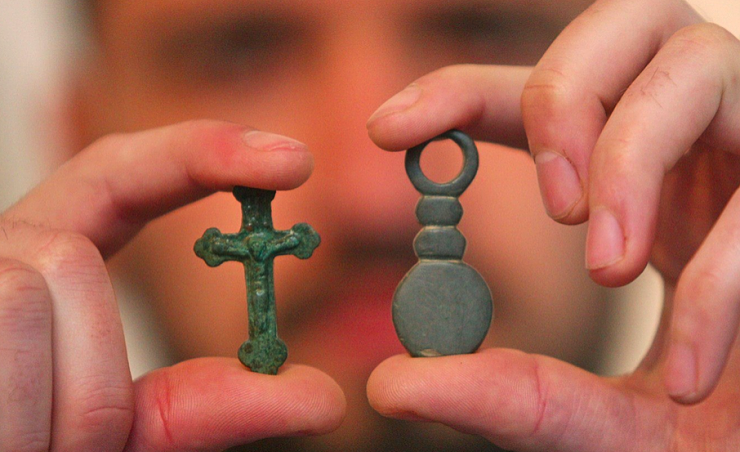31 Oct 2013 Treasure from Rýmařov Square
Categories: Treasures , Finds and rescue research in the Czech Republic , Calendar

Eight years ago, extensive research was carried out in the centre of Rýmařov in connection with the total reconstruction of Peace Square and Radniční Street. Archaeologists uncovered the foundations of a thirteenth-century house, as well as a number of artefacts such as an axe-mlat or earrings.
The research has yielded a number of significant findings. The origins of the local settlement date back to the thirteenth century, when a pre-local village was established on the left bank of the more fertile Podolský Brook on the present-day periphery of Rýmařov. The establishment of the fortified administrative centre at Hrádek in a dominant position above the steeper right bank also dates back to the same period. The first written record of the town itself dates back to 1333.
Archaeological discoveries from Rýmařov Square were exhibited by archaeologists in 2014 in the local town museum. The most significant find was the foundations of a house from the beginning of the town's existence, located in the western part of the square.
"The foundations of a house that can be dated back to the 13th century, i.e. to the time of the town's foundation, were found in Radniční Street," Petra Malá, the curator of the exhibition, said at the time.
When the first finds were made, work even had to stop for a while. "We agreed with the workers and we are cooperating. Where they are now being built, we worked on priority and got it done. We will always have a dedicated area for research and we move in conjunction with the construction work," Marek Kiecoň from the National Heritage Institute commented on the current situation at the time.
The research has produced some really interesting findings. Archaeologists have obtained evidence that a main road led through the centre of the town in the past. According to Malá, it ran along the south side of the town hall and was beautiful. "The foundation was made of grafts, i.e. perpendicularly set stones subsequently covered with gravel," Malá noted.
In addition, archaeologists also discovered a larger number of small objects of a horseshoe or a ring. They were most interested in an axe mound from the Eneolithic period. They had several versions of how this tool came to be under the axe-mill square. However, it is likely that someone found it in a field in the Middle Ages and took it home.
Finds like this are common in the redevelopment of historic centres. The city is then legally obliged to report the find to archaeologists and pay for the research.
Sources: www.szm.cz, www.rymarov.cz, www.denik.cz, www.idnes.cz
The article is included in categories: